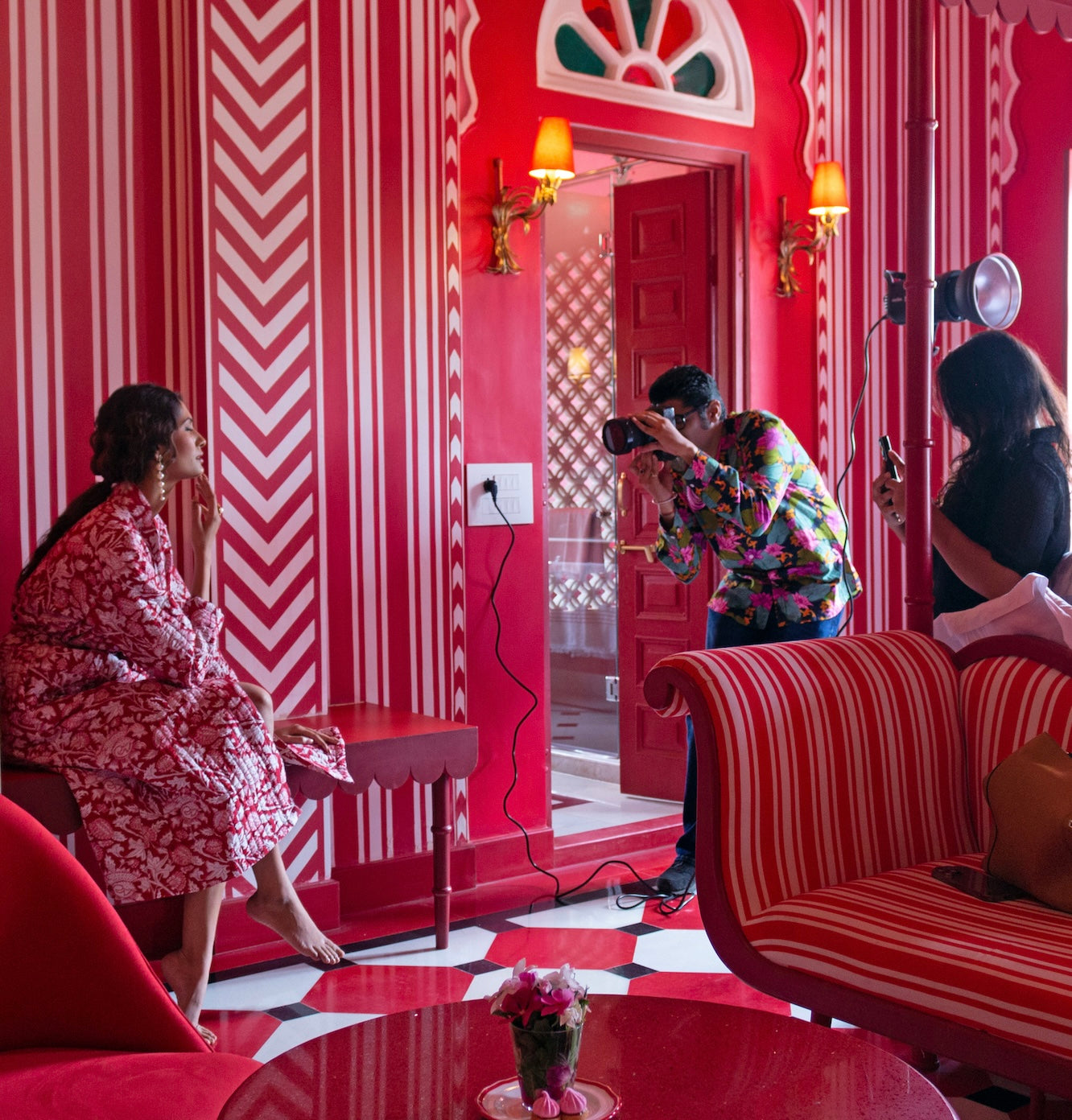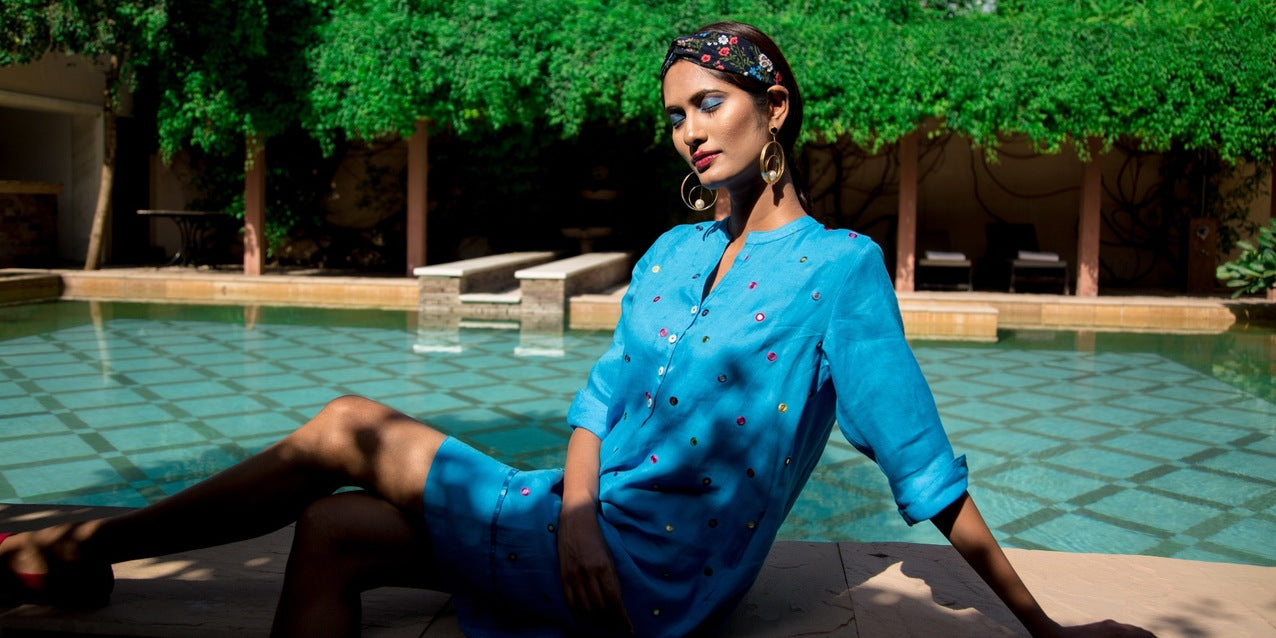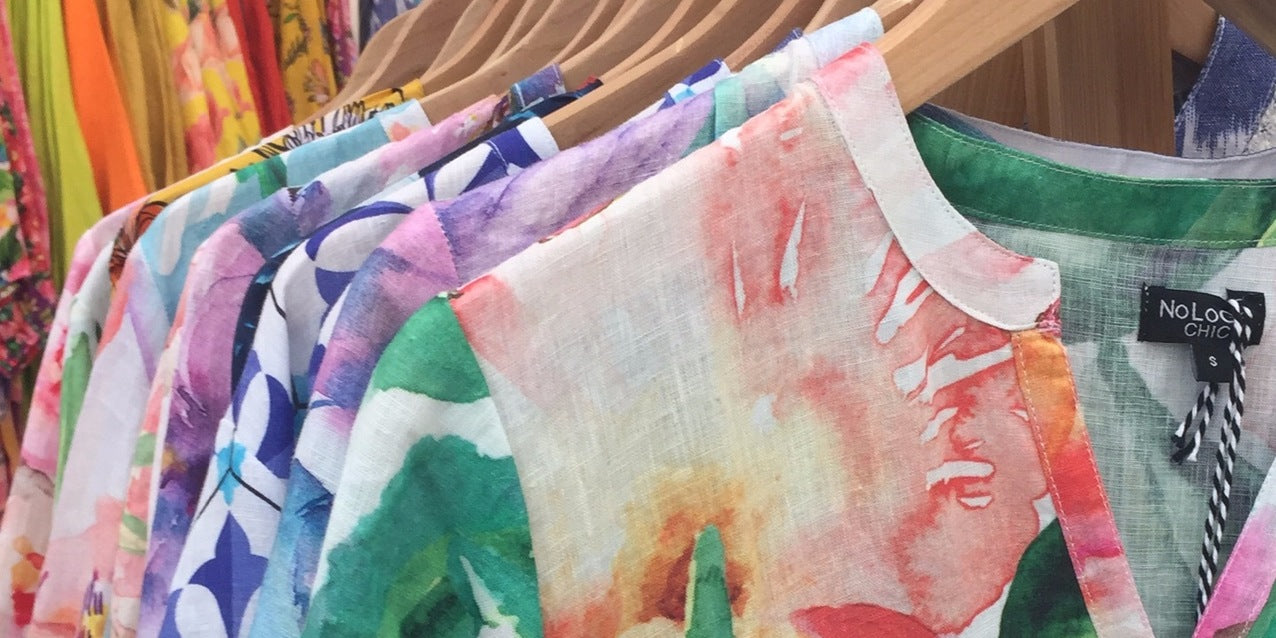Linum usitatissimum, or common flax, is called linen when made into textiles. It has been cultivated for thousands of years. In fact, it is considered to be the oldest fabric in the world. Flax was grown and harvested extensively along the Nile in ancient Egypt. Today one can see temple walls decorated with paintings of flowering flax. Men and women, rich and poor, wore this lightweight textile. The very finest, almost transparent fabric was reserved for the Pharoahs and of course mummies were embalmed in this magical cloth. Fragments of linen have been found in stoneage dwellings. The Phoenician traders brought flax from the Mediterranean to Gaul and the Romans introduced linen manufacturing throughout their empire.
From seed to harvest it takes one hundred days. The beautiful (mainly blue) flowers can been seen in fields across Western Europe where 80% of the worlds flax is grown, in rich damp fields though Ireland, northern France, Netherlands and the wonderful Blatic state of Lithuania with its traditions of linen-weaving steeped in history. The growing of flax is a very sustainable process. Flax is grown with far less water and pesticide than cotton. Farmers use fewer, if any, chemicals to grow flax, meaning less soil pollution and damage to insect life and wider ecosystems. Nothing from the plant is wasted. Not only does flax produce our beautiful linen fabrics, but also linseed oil, twines, ropes and even briquettes for heating. Flax, if untreated with dye, is fully biodegradable. Because flax really only needs the right climate and rainfall to grow, it is also a very environmentally-friendly plant to produce. Once the linen fabric has finished its life as a garment, cushion or teacloth, it biodegrades, meaning there’s less waste too. During manufacturing we make sure we use all off cuts and recycle these. Thanks to their longevity our beautiful linen garments are highly durable and make a great antidote to the fast-fashion, high-turnover consumerism that we now can see has been so harmful to the planet. Further it is interesting to note, whilst this is a key industry in Europe, worldwide linen makes up just 1% of fibres produced, with cotton being the largest. Given the need for sustainable fabrics, it’s time we redressed this imbalance and encourage more places to grow and process flax for linen production.
Linen is naturally moth resistant, anti-bacterial, extremely durable, is machine washable (dries faster than cotton ) and simply gets better and softer with each wash and wear! Natural wrinkles are actually part of the charm of linen fabric. The wrinkles are something to celebrate, and mean that you can take your fabulous linen clothes with you on holiday without worrying about having to find an iron. They will look gently wrinkled, but intentionally so. Linen is the ultimate fabric to you looking effortlessly stylish and comfortable. Linen is a fabulous fabric for hot weather as it allows your skin to breathe, and wicks away moisture to keep you feeling dry and comfortable. However.. a surprise for many is that this extraordinary fabric has natural temperature-regulating properties so linen will keep you warm and cosy on chilly days, yet you’ll never overheat.
I have worked with linen my entire career. Winning the coveted Christian Lacroix Award for Linen Design and the International Linen Secretariate Award for clothing design in linen. The most exciting time was in Monte Carlo. I was shortlisted as a designer to show my collection made entirely in linen amongst a group of finalists from around the world. I had made full skirts using Irish linen embroidered in Gujerat, India, stitched with thousands of mirrors. When the models stepped onto the catwalk and the photographers stood to shoot the garments, flash bulbs from their cameras set off the sparkling mirrors dazzling the audience who cheered and applauded. I won! A special day for sure.
Linen. The past, present and future of this cloth is a beautiful story and will continue to be so with your love.





